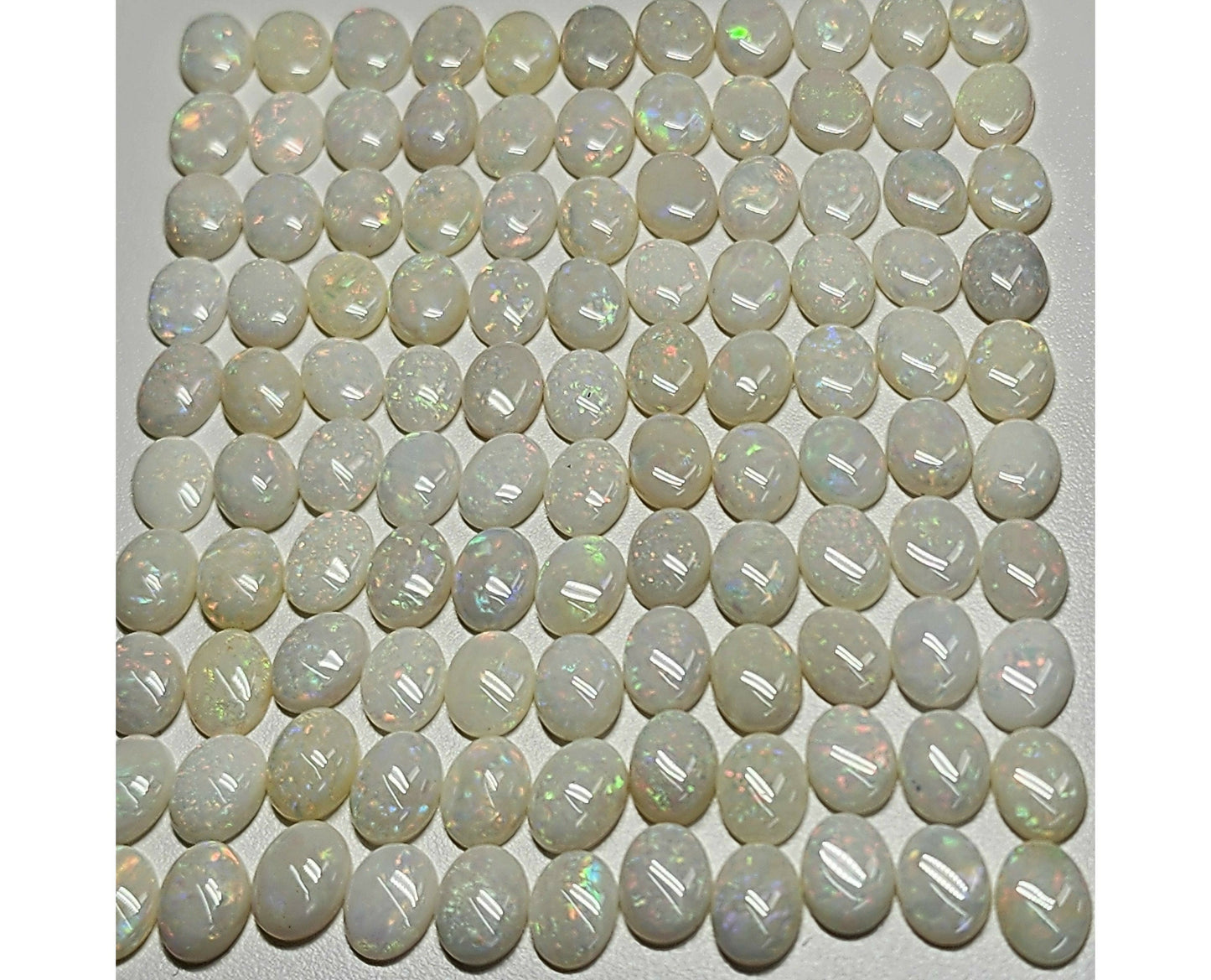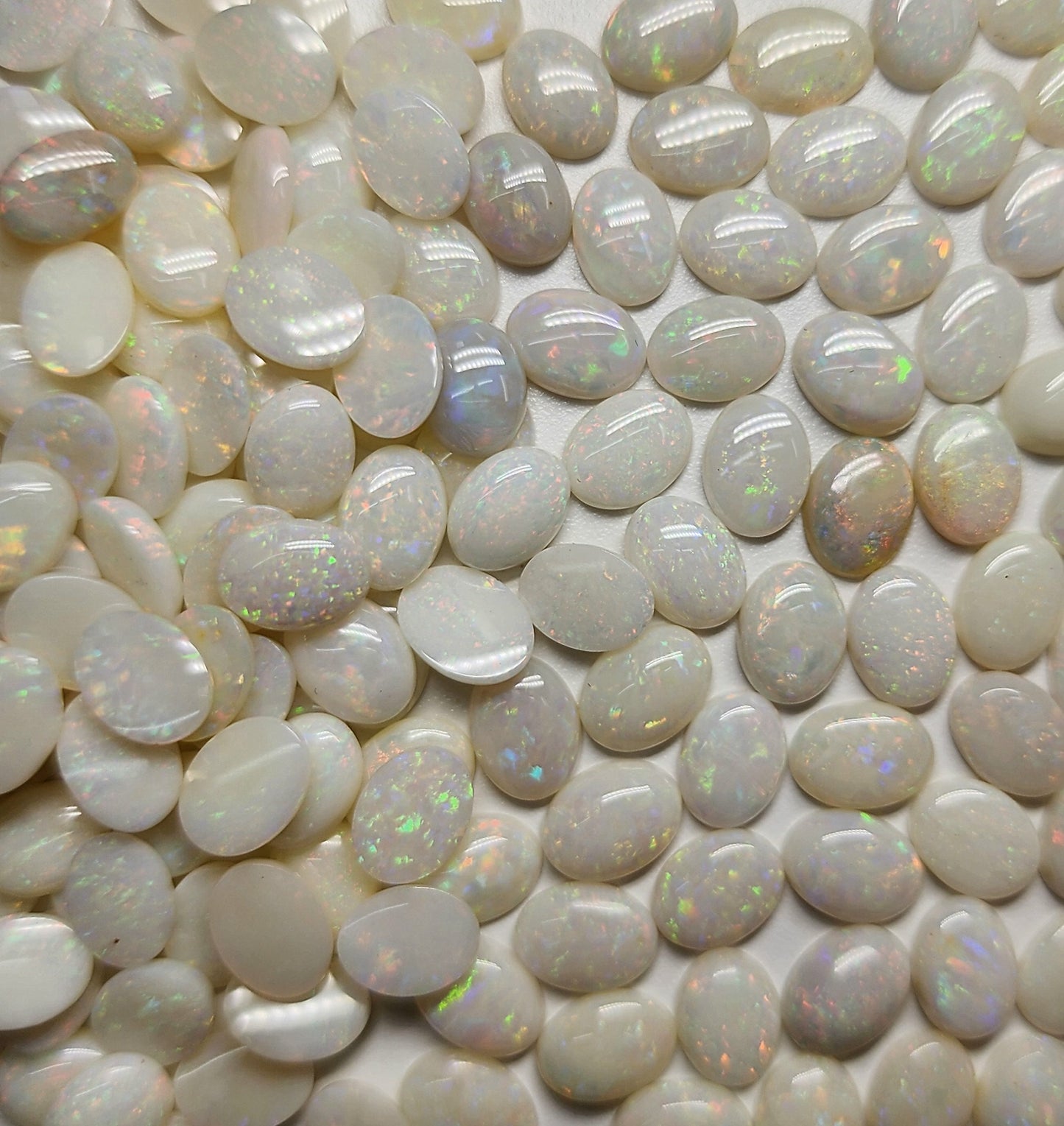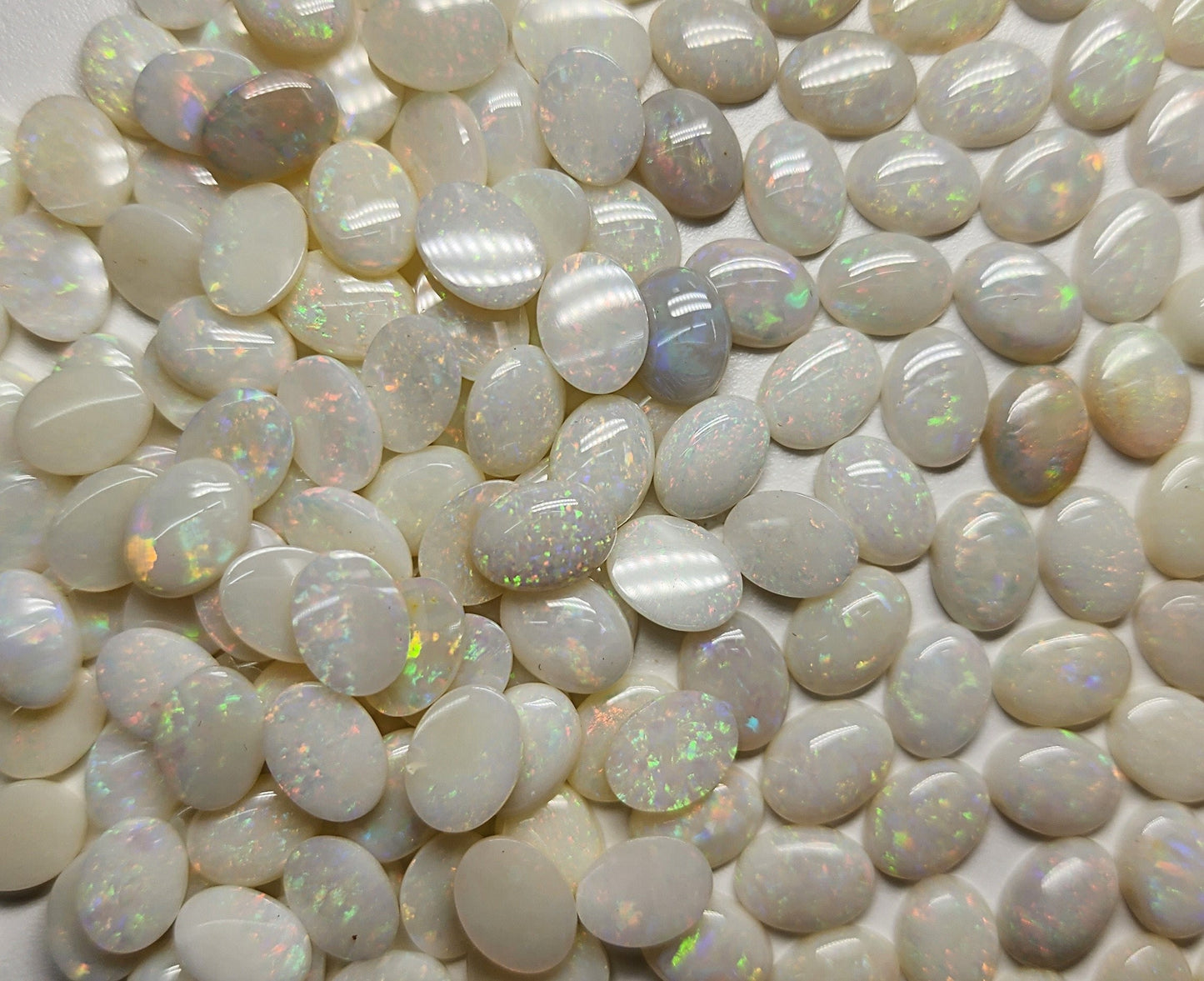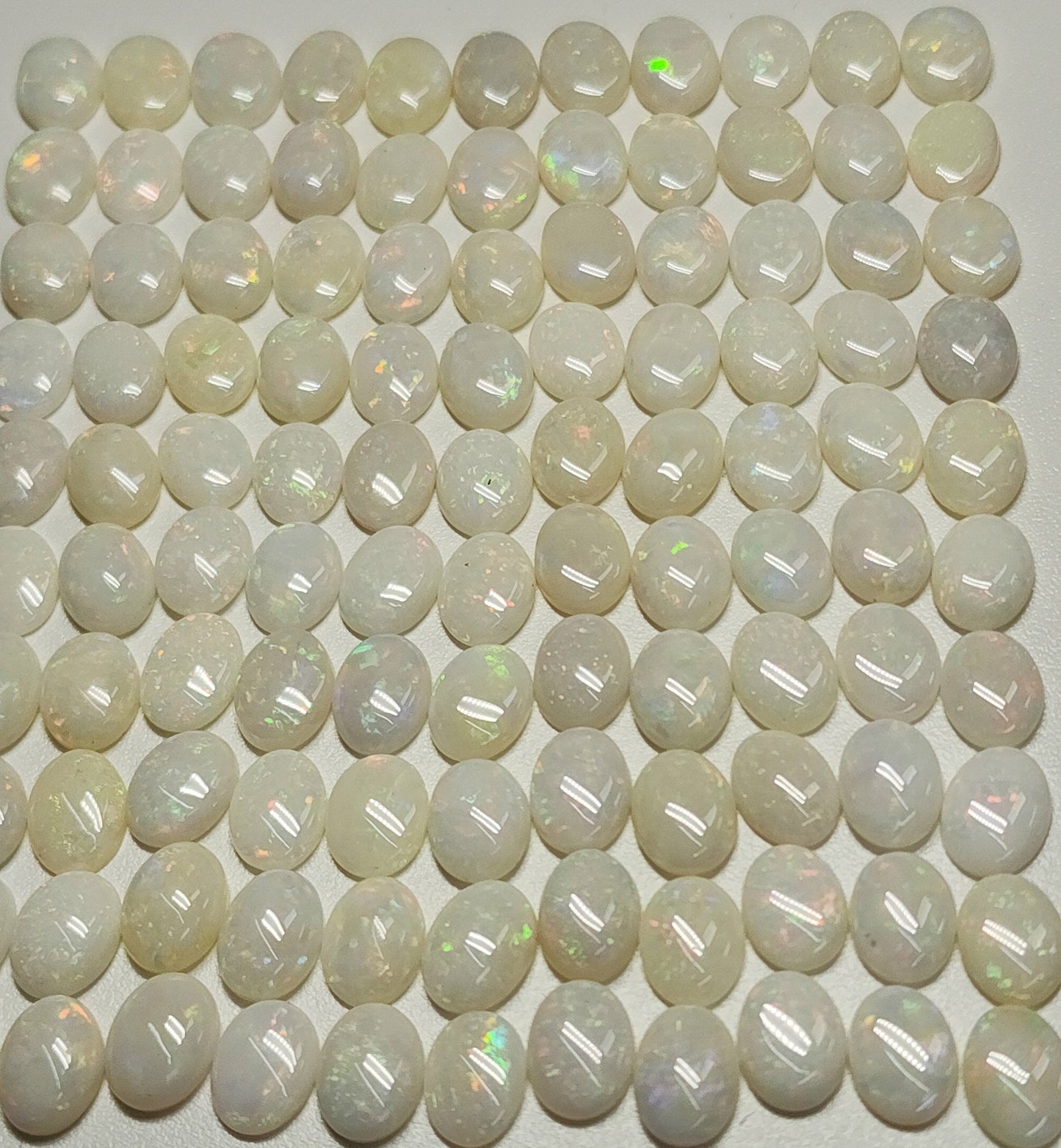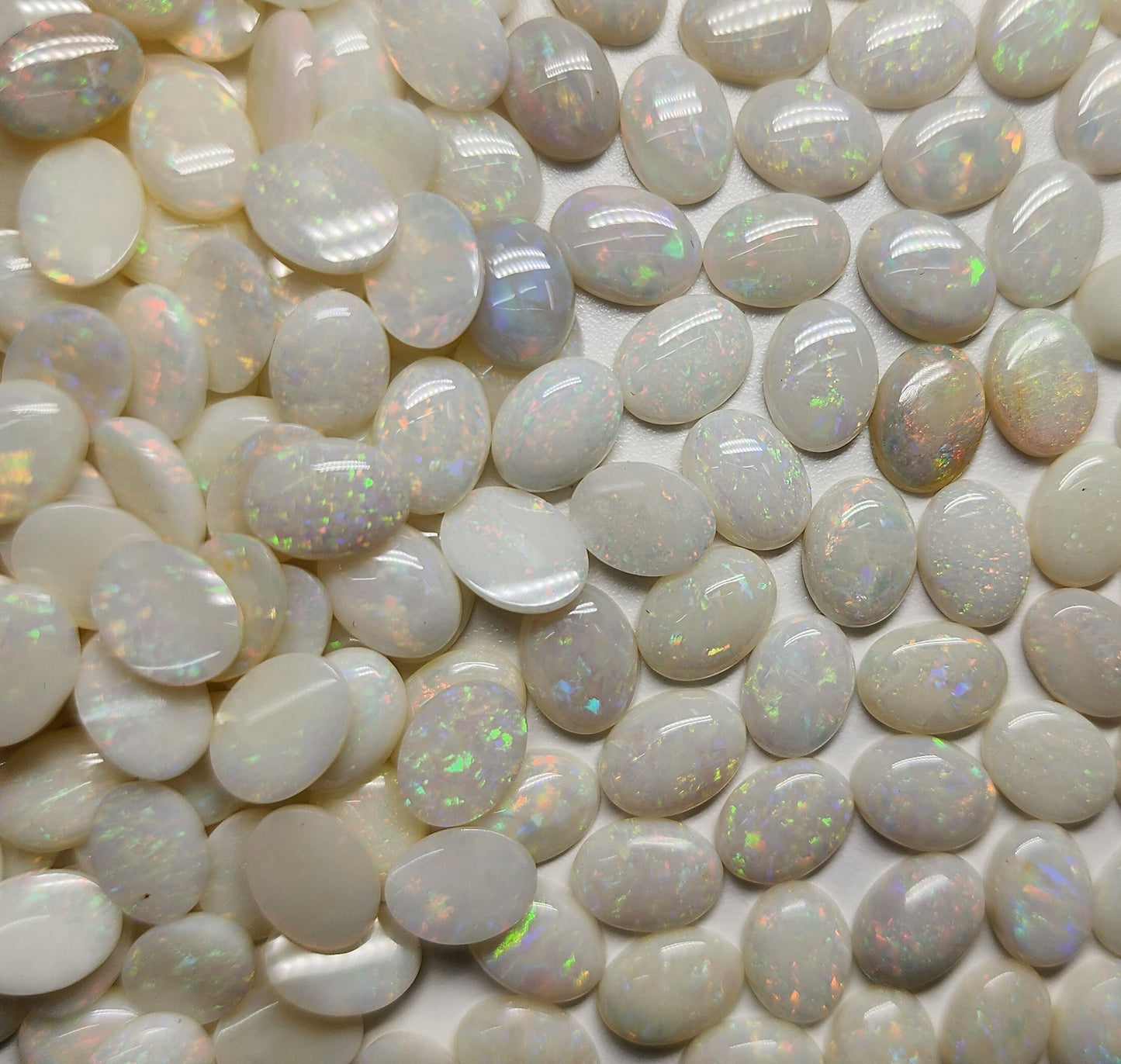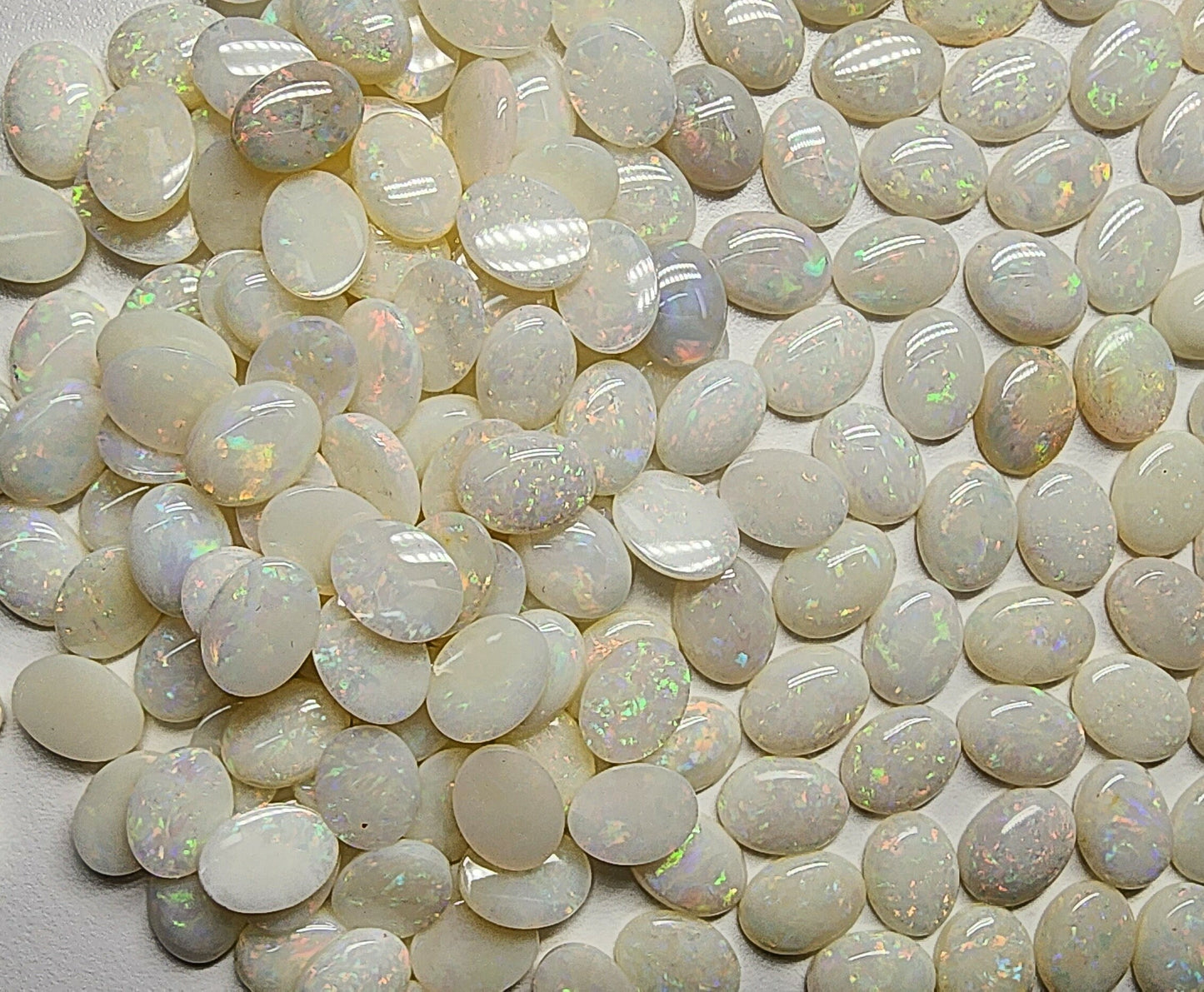GemExportsAustralis
54021.0 - 8x6 mm Wholesale Australian Solid White Oval Cut Cabochon Opal from 1980s for sale All with colour From 1.5 mm to 3.0 mm thick
54021.0 - 8x6 mm Wholesale Australian Solid White Oval Cut Cabochon Opal from 1980s for sale All with colour From 1.5 mm to 3.0 mm thick
Couldn't load pickup availability
You don't see what you are looking for...?
Never mind; please contact me!
I don't have EVERYTHING, but I just may have what you NEED!
These Opals are quite uniform in appearance and practically all of them can be matched into pairs for earrings.
Also ideal if set into ring or pendant for repeat selling as they are all fairly similar and can be sold from just one, or a few, advertising photos.
Another very strong point is that they have not crazed (cracked) over nearly 40 years!!!
IMPORTANT: Please bear in mind that ALL types of Opal DO NOT like continuous changes in temperature and/or humidity.
And, in the case of Opal Doublets and Opal Triplets which has some type of glue to hold the parts together, any detergent or chemical liquid that may impact on the glue.
Ultrasonic cleaners, which apart from an incredible vibration, has both extreme humidity (water!) as against normal "dry" air when taken out of the ultrasonic and detergent (chemicals), should be avoided.
And in particular if any of these Gemstones are involved; Opal, Coral, Pearls,Ivory, Emeralds (where fractures breaks any polished facet), Jet, Amber, Turquoise (which has not been injected with a compound to harden and "stabilize" it), tortoise shell, shell cameos and more.
Washing one's hands, and in particular washing dishes using a strong detergent whilst wearing rings with any of those gems, can have consequences!
A bit of history; Before dynamite was invented, large rocks, boulders and even mountain sides were broken into pieces by lighting a fire right next to it and once the rock had heated up they threw cold water onto it which caused the rock to crack from the sudden STRESS of going from hot to cold.
Opal is no different, except it doesn't have to be heated by fire in order to create the conditions for STRESS to occur.
Being in the habit of leaving an opal ring on the window sill or somewhere where the sun can bake on it and for then to cool off overnight, can also eventually have consequences.
But, the stress created in the Opal in such situations, is not so much about hot and cold, but rather wet and dry.
This is because Opal do contain various percentages of water... that's right... WATER!
(I can only guess the way to measure the water content in Opal is to first weight it on an extremely delicate and accurate scale, then heat the Opal until it crumbles into dust and then weight it.)
But back to "wet and dry" stress, or "crazing", the term used by the Opal trade; the sun or some other heat or humidity extractor (like air conditioner!) literally sucks water out of the Opal and stress build up on the surface of the Opal and eventually it may start to develop hairline cracks running around on the surface.
Think sun baking on a clay pan after the rain has stopped; after some time the water evaporators, the clay starts to dry up and eventually it starts to crack all over.
It is important to understand that not all Opal will develop crazing, but rather the ones with a very high water content whilst in the ground and which once dug up, cut and polished and then exposed to an environment which depletes the water in the Opal that are the problem ones.
Or worse; the repeating process of loosing and adding water to such Opal.
Like it drying out during the day in air conditioned office or hot outdoor with very low humidity then adding water whilst washing the hands with the Opal ring on.
I have one Opal that was dug up more than 100 years ago, no problem!
We do not import, promote or sell Synthetic or Man Made Opal, nor any non-Australian mined Opal.
On 27 July, 1993, The Australian Government proclaimed Opal as the National Gemstone of Australia!
Share
